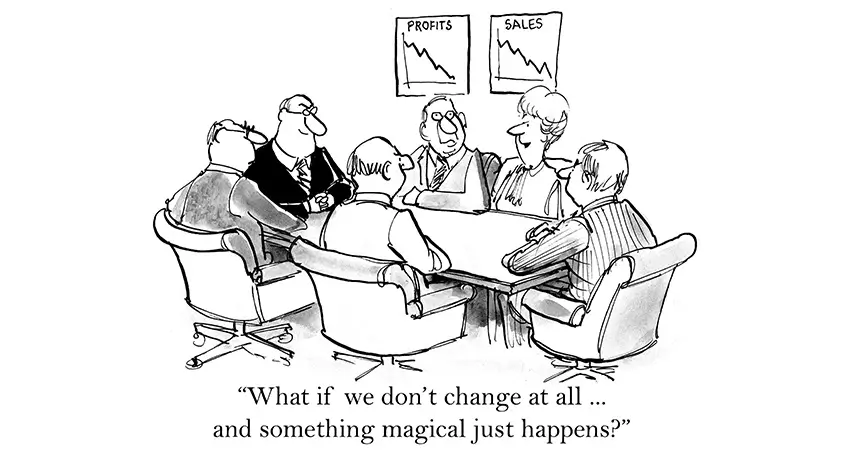Why “Free” Organic Traffic Is Never Truly Free

As a small business owner, you’ve heard it a million times. The spam messages clog your email inbox:
Why pay for Adwords when you can get free organic traffic from Google? Just give us your credit card information and never pay for Adwords again!
First off, let me say that if you ever fall for the old spam email trick, you probably deserve the ensuing ripoff. No legitimate SEO agency will ever contact you that way.
The idea of free Google traffic is ludicrous, like the fabled golden city of El Dorado.
Small business SEO is highly competitive. Corporations, review sites, and national chains have brand recognition and a huge advantage over Ma & Pa’s Plumbing — not to mention your direct competitor down the street who’s ramping up his website.
And that’s why the so-called “free” traffic is never free. Someone qualified has to optimize the site to generate “free” traffic. SEO expertise isn’t cheap. Websites can’t be optimized in a single pass and certainly not in a day.
SEO is a long-term investment yielding long-term benefits. As with any investment, you have to pay upfront, manage it over time, and make adjustments.
Your Site without SEO? There Won’t Be “Free” Traffic
Why bother with a website then if it costs so much to maintain?
Well, because in 2022:
- 71% of small businesses have a website.
- 81% of shoppers research a business online before making a purchase, with 55% searching for online reviews and 47% searching for the business’ website.
- Roughly 85% of consumers use the internet to find local businesses.
(Source: Zippia careers)
It’s just the price of doing business in the 21st century.
A one or two-person operation may need nothing more than Yelp reviews to keep the phone hopping, but for a plumber, electrician, or any other local service business with an office and a fleet of trucks, a website is the contemporary equivalent of the Yellow Pages. The fingers no longer walk; they search.
Sadly, more than half of local business websites get fewer than 16 visits a day. 13% get only 4 visits daily, and only about 20% manage to break 50 daily visits. Building a website doesn’t guarantee success.
It’s tough for the little guys. Beyond the dough you shelled out for a dinky website with boilerplate copy, you now have to optimize and promote it, or it will become little more than a faded billboard on a desert road to nowhere.
Why It Pays to Invest in Long-Term SEO
Okay, so we’ve established that a website is no longer an optional marketing tool for the little guy. And we’ve also shown that if you want to get any results from it, you’ll have to pay for qualified help with SEO.
But what are you paying for? How do you know whether to trust an agency or consultant? What kind of return on investment (ROI) can you expect, and how long will it take before you start seeing results?
Regardless of your business size or budget, organic traffic should be a top priority in your marketing strategy. Here’s why:
- Organic traffic is high quality: Of all website traffic sources, organic has the highest level of intent. When someone types a query into a search engine, they’re looking for an answer to their question, and they’re more likely to convert when they find it on your website.
- Organic traffic is cost-effective: You don’t have to pay for each click as with paid advertising. Once you rank high in the search engine results pages (SERPs), you can enjoy a consistent stream of targeted traffic to your website.
- Organic traffic is scalable: Unlike paid ads with a limited budget, you can gradually increase your website’s visibility and reach by scaling up your efforts, ultimately driving more leads and sales.
- Organic traffic is sustainable: Paid ads get you quick results, but they’re not a long-term solution. Once you stop paying, your traffic will disappear. With organic traffic, on the other hand, you can build a pipeline of leads and customers for your business.
Don’t Skip Site SEO Maintenance!
Set and forget — isn’t that how it works?
You launch the website and leave it to do its job. Now and then, you might change a word or two on the home page, but that’s about it.
Bad idea.
Because a website isn’t a one-time investment in time, effort, and resources. Keeping your site well-maintained and up-to-date is crucial to its success.
Think about it: how will Google know that your business is still relevant if you don’t regularly update your site? Why should Google bother reindexing your site if you’re not making changes and adding new content?
And if you’re not paying attention to your analytics, how will you know whether the changes you’re making are having an impact?
The answer is that you won’t — which is why regular maintenance is essential. By setting aside time each week or month to work on your website, you can ensure that it stays fresh and relevant and continues attracting new visitors.
Most web pages lose search value over time, unless they’re updated to stay relevant. The blog post that drove 50 visits a day two years ago may now drive only 20, but a partial rewrite and expansion of the blog could push the traffic numbers back up.
How Much Should You Spend on SEO?
The amount you’ll need to invest in SEO depends on several factors, including:
- The size of your business
- Your budget
- Your industry
- The level of competition in your industry
- The current state of your website
- Your business goals
If you’re in a highly competitive industry, you may need to invest more. And if your website is already fairly well-optimized, you may be able to get by with less.
The best way to determine how much to spend on SEO is to determine your ROI. This can be tricky to calculate, but the basic idea is that you’ll need to spend enough to see results — and those results should be significant enough to justify the expense.
Let’s say you spend $500/month on SEO, leading to 10 new customers. That’s $50/customer. If the average customer spends $100 with your business, then your ROI is 50%.
On the other hand, if you spend $500/month on SEO and it leads to one new customer, your ROI is only 10%. In this case, you might want to reconsider your strategy — unless that one customer is worth more than $5,000.
To calculate your ROI, you’ll need to track several metrics, including:
- The amount you’re spending on SEO
- The number of new visitors to your site
- The number of new leads generated by your site
- The number of new customers acquired through your site
- Your average customer value
“Fantastic,” you may be thinking. “Now I have to install the analytics, analyze the numbers, and calculate the ROI to reallocate my marketing budget.”
But a responsible marketing agency will do that for you and deliver timely marketing reports showing the results of their efforts and campaigns.
Call us to discuss to learn how we can help you meet your business goals. All consultations are free. We’ll offer an honest appraisal of your site and devise an affordable plan to improve it.
About Culture Cube Digital Marketing
Culture Cube specializes in digital marketing for local businesses. Our clients include plumbers, HVAC installers, appliance repair companies, and local newspapers.
We offer the expertise of a large agency at small agency rates.
Because we specialize, we’re better qualified to promote your small business and create the most effective campaigns.
We don’t waste client money on lavish offices, fancy equipment, costly business trips, and endless meetings. We pass our savings on to you and welcome you as a partner more than a client.
Please contact us to learn what we can do for you.

Peter Losh is the SEO Director of Culture Cube Marketing in Upland, California. He's also a de facto UX designer, site builder, and content creator. Unlike most folks in the SEO biz, he works directly on the sites he optimizes, having witnessed the effects of recommendations that go ignored or misunderstood (in previous gigs).
Peter has worked on websites since the salad days of the internet, first as a graphic artist and web designer at the Centers for Disease Control. Then came several years of freelance web development, SEO and e-commerce management for business sites of various sizes, and ultimately a 10-year stint as the sole SEO Manager of PartyCity.com.
In his spare time, he enjoys classic film, classical music, and classic comebacks. And cats.
Professional Work Experience
- Search engine optimization
- Ecommerce management
- Conversion rate optimization
- UX design and analysis
- Copywriting and training
- E-mail campaign design
- Web design and development
- Graphic design

